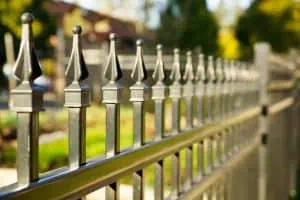How to Use a Trimmer Around Metal Fencing?
A trimmer can be a great tool for trimming grass around aluminum fencing. However, it should be used with care to avoid damaging the fence or causing damage to the yard. When using a trimmer, you need to ensure that it has a line designed for cutting through thick grass and weeds, as well as an adjustable blade to minimize the risk of hitting a picket or post.
(Looking for vinyl privacy fence contractor? Contact us today!)

The grass isn’t the only thing that can damage a fence, though. Weeds are a common problem in residential yards, especially along fence lines. The weeds are more likely to grow and spread if the grass along the fence is neglected, or if birds rest on it and drop seeds. In addition, weeds can get in the way of your lawn mower and other yard equipment.
To minimize weed growth, treat the ground underneath the fence with a preemergent herbicide in the spring before weeds have a chance to grow. Apply an herbicide formulated specifically for your weeds, and follow the manufacturer’s instructions.
The herbicide should be applied on a regular basis to keep weeds at bay. You can also use it to remove weeds that have already grown if you want to get rid of them without hurting the fence.
You can trim the grass around a metal fence with a string trimmer. Be sure to choose a string trimmer that has a line designed for cutting through weeds and thick grass. Be sure that the trimmer has a blade adjustable to allow for a wide range of cutting heights, and be careful not to cut into any aluminum fence pickets or posts while you trim.
If you are concerned about the potential for a string trimmer to hurt your fence, create a weed-proof barrier around your fence by adding a natural or decorative material. Mulch, river stones, metal sheeting, flashing, and corrugated piping are all effective choices for creating a weed-proof barrier to protect your fence.
Alternatively, you can build a fence that is higher than your grass. This will give you more room to maneuver and trim the grass around your fence.
Another option is to build a fence that has a wider gap around the bottom of the posts, which will give you more room to trim the grass and prevent the fence from sagging. You can also install a metal fence with post sleeves that allow you to trim the grass underneath the fence while still keeping the fence up.
Make sure you have a good pair of work gloves to protect your hands from the sharp blades of the trimmer. You should also wear safety glasses and hearing protection while working with a trimmer or other power tools.
Rather than trying to edge the grass along the fence, you should trim the grass from the side of the fence. This will help you get a clean finish and lessen the chances of accidentally damaging the fence or getting into a tangle with it.

